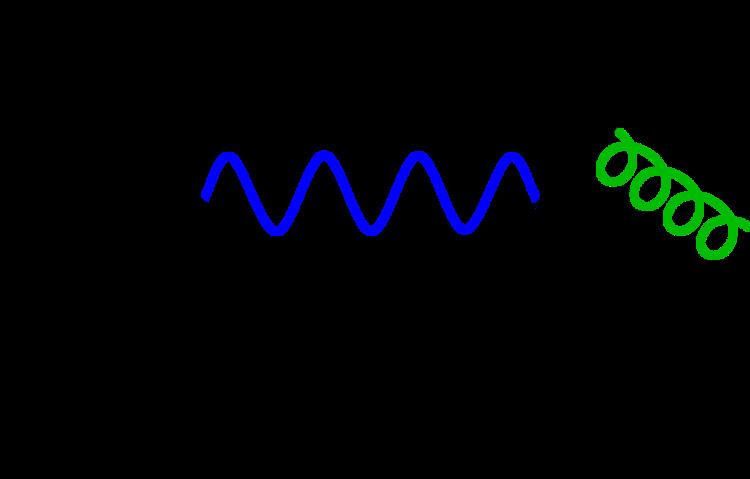 | ||
Wick's theorem is a method of reducing high-order derivatives to a combinatorics problem. It is named after Gian-Carlo Wick. It is used extensively in quantum field theory to reduce arbitrary products of creation and annihilation operators to sums of products of pairs of these operators. This allows for the use of Green's function methods, and consequently the use of Feynman diagrams in the field under study. A more general idea in probability theory is Isserlis’ theorem.
Contents
Definition of contraction
For two operators
where
Alternatively, contractions can be denoted by a line joining
We shall look in detail at four special cases where
We then have
where
These relationships hold true for bosonic operators or fermionic operators because of the way normal ordering is defined.
Examples
We can use contractions and normal ordering to express any product of creation and annihilation operators as a sum of normal ordered terms. This is the basis of Wick's theorem. Before stating the theorem fully we shall look at some examples.
Suppose
where
We can use these relations, and the above definition of contraction, to express products of
Example 1
Note that we have not changed
Example 2
Example 3
In the last line we have used different numbers of
Luckily Wick's theorem provides a shortcut.
Statement of the theorem
A product of creation and annihilation operators
In other words, a string of creation and annihilation operators can be rewritten as the normal-ordered product of the string, plus the normal-ordered product after all single contractions among operator pairs, plus all double contractions, etc., plus all full contractions.
Applying the theorem to the above examples provides a much quicker method to arrive at the final expressions.
A warning: In terms on the right hand side containing multiple contractions care must be taken when the operators are fermionic. In this case an appropriate minus sign must be introduced according to the following rule: rearrange the operators (introducing minus signs whenever the order of two fermionic operators is swapped) to ensure the contracted terms are adjacent in the string. The contraction can then be applied (See Rule C″ in Wick's paper).
Example:
If we have two fermions (
Note that the term with contractions of the two creation operators and of the two annihilation operators is not included because their contractions vanish.
Wick's theorem applied to fields
The correlation function that appears in quantum field theory can be expressed by a contraction on the field operators:
where the operator
In the end, we arrive at Wick's theorem:
The T-product of a time-ordered free fields string can be expressed in the following manner:
Applying this theorem to S-matrix elements, we discover that normal-ordered terms acting on vacuum state give a null contribution to the sum. We conclude that m is even and only completely contracted terms remain.
where p is the number of interaction fields (or, equivalently, the number of interacting particles) and n is the development order (or the number of vertices of interaction). For example, if
This is analogous to the corresponding theorem in statistics for the moments of a Gaussian distribution.
Note that this discussion is in terms of the usual definition of normal ordering which is appropriate for the vacuum expectation values (VEV's) of fields. (Wick's theorem provides as a way of expressing VEV's of n fields in terms of VEV's of two fields.) There are any other possible definitions of normal ordering, and Wick's theorem is valid irrespective. However Wick's theorem only simplifies computations if the definition of normal ordering used is changed to match the type of expectation value wanted. That is we always want the expectation value of the normal ordered product to be zero. For instance in thermal field theory a different type of expectation value, a thermal trace over the density matrix, requires a different definition of normal ordering.
